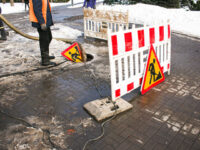Mold Removal – How to Remove Mold from Your Dwelling
The first step to mold removal is to identify the location of the mold. Once the location has been located, mold removal is a process of physically cleaning and removing affected areas. The surfaces should be thoroughly dry, ideally within 24 hours. This will prevent the growth of new mold in the area. If the mold is on porous materials, it should be removed and disposed of properly. Non-porous materials can be cleaned and reused, but caution should be exercised.
Mold removal is important because mold can be harmful to humans. Because mold feeds on wet wood, it can damage the structure of a building. Often, mold damage is caused by a leaky roof, which leads to a high likelihood of mold growth. If you suspect that your home or business has mold, it is important to contact a structural engineer. They can perform an inspection to ensure the damage is not too severe.
The process of mold removal begins with a HEPA filter vacuum. The next step is to apply antimicrobial cleaners to the affected materials. These antimicrobial cleaners penetrate and wet the mold source, reducing the number of mold spores. Scrubbing the remaining materials with a brush is another crucial step in the mold removal process.
Mold spores are present in the air, and they help break down organic materials. However, once mold starts growing inside a building, it can cause damage to the structure of the building and its contents. As a result, mold is an immediate health risk, and removing it is crucial.
Mold grows on damp surfaces, such as in walls and ceilings, and it’s a common problem inside our homes. It can also form in air conditioners, washing machines, and other similar appliances. While a mold infestation may not be dangerous alone, the presence of a mold odor and visible mold may be indicators of a larger problem. Mold spores contain a mixture of bacteria, chemicals, dust mites, and other contaminants that can affect our health. Fortunately, there are a variety of ways to combat mold infestations in our homes.
One of the most common ways to deal with a mold problem is by removing the affected materials. While removing these items can seem like a daunting task, the removal process involves a high degree of care and efficiency. Before removing items, a professional will conduct an air test to detect any mold spores that might be lurking in the air. Once these spores are detected, special plastic bags are used to seal the affected items. Larger items, such as floorboards and furniture, are wrapped in similar materials to prevent airborne mold spores from spreading.
Besides damaging the property, mold can also adversely affect your health. The best way to avoid mold is to prevent it from forming in the first place. However, in some cases, it is not possible to avoid mold contamination. Fortunately, cleaning up an existing mold problem can be both a safe and effective process if you know what to do and use the right tools.
Many people think mold removal involves heavy chemicals, but this method is not always necessary. There are many ways to eliminate mold without using chemicals, including scrubbing, misting, and painting. In fact, a chemical-free solution can often be as effective as a chemical-laden one. But be aware that the scrubbing and painting methods may not be suitable for all types of mold.
Mold is everywhere, and while it is a natural part of the environment, most forms are harmless. However, if you notice a large growth of mold, you should seek professional help. When the mold grows large enough, it produces more spores and can begin to damage building structures and the health of residents.
While black mold is a potentially dangerous fungus, it’s generally not dangerous. Many people can clean a small infestation themselves. However, the spores of this mold can cause severe health problems, which is why it’s best to hire a professional to perform the job. If you’ve discovered a mold infestation, it’s important to get rid of it as soon as possible.
Depending on the size of the growth, mold removal can cost from a few dollars to hundreds of dollars. The cost can be higher for large growths, and the more difficult the mold is to access, the higher the cost. Moreover, if you’re dealing with toxic molds, you’ll need to use heavy chemicals and protective gear for your workers.




